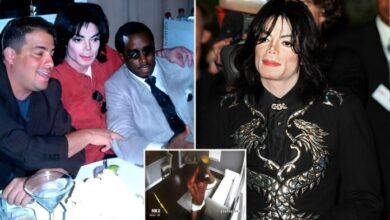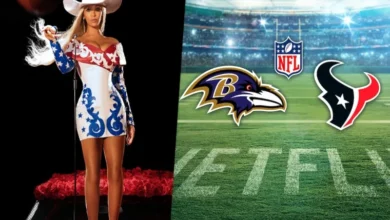Jay-Z and Beyoncé’s blank space,The endless social climb of pop’s royal couple
The endless social climb of pop’s royal couple
When Jay-Z took the stage at this year’s Grammys to accept the second-ever Dr. Dre Global Impact Award, the rap titan and business mogul seized the opportunity to address the elephant in the room. After name-checking a few of the organizational fumbles that had led hip-hop artists, himself included, to boycott the ceremony in years past, he swung the spotlight onto his wife. “I don’t want to embarrass this young lady,” he said, as Beyoncé smiled back from under a white Stetson, “but she has more Grammys than everyone, and never won album of the year. So even by your own metrics, that doesn’t work.” The nervous laughter that punctuated the moment told the story of an era, in which Beyoncé’s repeated passing over in the categories that count the most has increasingly been held up as evidence of an institutional failure, reflecting wider cracks in the foundation. “We gotta keep showing up — and forget the Grammys for a second, just in life,” Jay added in closing. “Keep showing up until they give you all those accolades you feel you deserve. Until they call you chairman. Until they call you a genius. Until they call you the greatest of all time.”
Let’s get this out of the way: Beyoncé should have won already — even Adele knows it — and you could make a case for Jay-Z, too, who was nominated for 4:44 in 2018. Rarely are stars of Bey’s stature so ambitious, or their work so consistently unimpeachable. It makes sense that Jay, a careerist who has spent decades crafting an impeccable résumé, can’t understand why such an honor is missing from his partner’s. Yet while there is a reading of his speech as bold and insurgent, deploying a Trojan Horse from within the city walls, there is another that is more like lobbying — getting ahead of next year’s cycle, where a showdown between Beyoncé and Taylor Swift feels all but inevitable. Either way, it represents a seemingly insatiable need to see that trophy on their mantle.

Jay’s speech exists on a continuum with a more recent stunt, in which Beyoncé’s team beamed advertisements for her new album, Cowboy Carter (out March 29), onto the exteriors of the Guggenheim Museum, Whitney Museum, New Museum and the Museum of Arts and Design. The messaging, apart from some mundane release details, qualified her current move into country music, reading: “This ain’t a country album. This is a ‘Beyoncé’ album,” as if putting primacy on the artiste as fit for display there. Taking back space has long been a point of emphasis for the couple: When Noel Gallagher responded to Jay-Z headlining Glastonbury by saying hip-hop had no place at the festival, the rapper emerged performing “Wonderwall.” The “performance art film” for Jay’s song “Picasso Baby” was inspired by the work of artist Marina Abramović and shot at Pace Gallery. As The Carters, they brought their “Apes**t” music video to the Louvre. “Put some colored girls in the MoMA,” Jay once rapped, with Beyoncé capping the list. “Call Larry Gagosian, you belong in mo-seums.”
Museums, of course, are colonial by nature. And awards ceremonies, at least those that drive conversation in the entertainment business, have long been built on the myth of white culture as the dominant American culture. (For all its diversity initiatives in recent years, the Recording Academy still maintains a white majority in its voting class.) In the Carters’ ongoing push for acceptance, most roads seem to lead to a white establishment. To be clear, there is value in the challenge: “De-centering whiteness in arts and cultural institutions is an urgent matter,” the writer Jamara Wakefield wrote in 2019. “This is why it is critical that the public continue to apply pressure to power, so institutional leaders do not become complacent or complicit.” But what is curious about the efforts of pop’s royal couple is how they’ve triumphed by just about any other metric, and how doggedly they still pursue the approval of a few institutions as the definitive appraisal of their worth. It’s no one’s place to tell them not to fight, but it may be time to recognize that fight as something other than activism.
The inspiration for Cowboy Carter, Beyoncé revealed in a statement, dates back to 2016, and the hostility she experienced performing her song “Daddy Lessons” at the CMA Awards, alongside the trio then still known as the Dixie Chicks. Country’s biggest night, it seemed, was not a safe space for Blackness, a feeling compounded by the Grammys denying the song entry in country categories that same year. In the book Black Country Music: Listening For Revolutions, Francesca T. Royster opens with the complications at the core of this issue — namely, the struggle to distance the music from its more intolerant associations. As she put it, to many ears country music can still “evoke and memorialize visceral memories of racialized violence; lynchings, the indignities of Jim Crow; gender surveillance and disciplining; and the continued experience of racial segregation in urban, suburban, and rural spaces in the North and South.”

Through the lens of that friction, one can read Beyoncé’s very presence on that stage as mounting a case for Black belonging. In an essay centered on the CMA performance, Royster was able to articulate the merit of such seemingly seditious acts: “In the end, I see Beyoncé offering a revised model of rage that can be generative, and also inclusive and justice seeking, one that parallels the Black feminist view of ‘mothering.’ ” But the caveats are obvious: No matter how generative, inclusive and justice-seeking Bey’s rage, she remains an interloper, defined as such by the terms of the conversation she wishes to join. Years later, Cowboy Carter faces the same conundrum. The purist is not swayed by an outsider’s know-how or obeisance, and any move to show one up plays into the very perception that genre hardliners enforce — of countryfolk keeping out carpetbaggers, even or perhaps especially the most accomplished Black pop star of a generation.
Cowboy Carter‘s cover photo has already kicked off some heated debates about intent — specifically, about appealing to the white gaze versus honoring the legacies of Southern Black identity. In the image, she sits sidesaddle on horseback, platinum-blonde hair flowing out of a cowboy hat, hoisting up an American flag. On the one hand, there is a rich history of Black cowboys and rodeos, and bringing that context to the fore is a way to put Black people at the center of a narrative from which they have largely been divorced in popular culture. On the other, there is no more blatant performance of an all-American identity than waving the stars and stripes — and so much of that identity has been predicated on Black erasure that sacrificing oneself to it can feel like submitting to those values. In the 1963 book Blues People, Amiri Baraka said that “the adjustment necessary for the black man to enter completely into ‘white’ American society was a complete disavowal that he or his part of the culture had ever been anything other than American.” There is an extent to which the Americanness of it all comes to supersede the Blackness, where the attempt to reclaim the thing becomes an acquiescence to its power.
There’s a passage from Frantz Fanon’s Black Skin, White Masks that sticks with me. Fanon, one of the foremost racial theorists, first explained the needs of Black acceptance: “Since the black man has always been treated as inferior, he attempts to react with a superiority complex. … It is because the black man belongs to an ‘inferior’ race that he tries to resemble the superior race.” After laying out the particulars of this complex, Fanon puts the relationship into striking relief: “Man is human only to the extent to which he tries to impose himself on another man in order to be recognized by him. As long as he has not been effectively recognized by the other, it is the other who remains the focus of his actions. His human worth and reality depend on this other and on his reaction by the other. It is in this other that the meaning of his life is condensed.”
It is clear that the Carters, in seeing their work underrecognized by these institutions, see its very meaning condensed. But in truth, it is boundless, far greater than the space of those halls. No one person’s reach can extend beyond institutional power, but allowing such institutions to have the final say on legacy is minimizing in its own way, particularly when you no longer need to amplify your voice to be heard, or affirm your own greatness to have influence. So much great art is never considered high art, and that’s fine. It would be foolish to say we have not been empowered by their efforts to some extent: The masterpieces created chasing highbrow benchmarks and insider status are the spoils of this crusade, challenging us to push for greater heights, as well. You see it in the reverent way other artists talk about them, their craft and everything they’ve achieved (look no further than this year’s best new artist winner, Victoria Monét). We continue to invest in the drama of their fight for inclusion because it can feel like a front-line battleground for a more impartial world: If their excellence can’t be recognized, can any of ours? But as the fight drags on, the struggle becomes cyclical, and it grows clearer and clearer that we can’t count on their victory to save us.






